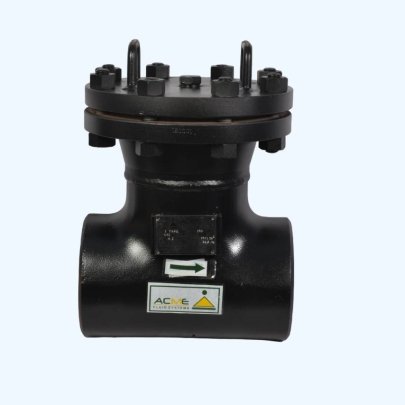T strainers, colloquially known as t-type strainer, stand as quintessential fixtures within industrial pipeline infrastructures, serving as meticulous guardians against detritus, particulates, and contaminants. Their stalwart construction and adaptability have cemented their prevalence across a myriad of sectors, including but not limited to petroleum refinement, chemical processing, power production, and aquatic purification.
One of the top producers of industrial filters in India is ACME Fluid Systems. We provide an extensive selection of filters that are used in a variety of sectors to increase production and ensure smooth operations. Any fluid can have unwanted particulates removed by a process called filtration. The term “filtrate” refers to the transparent fluid that remains after passing through filter material. The term residue refers to the substance that is left over after the filtration process. Find all about India’s top filter producers. In order to remove particles and filter fluids, filters are very helpful in various kinds of businesses. Purchase premium filters to meet your industrial requirements.
Hallmark Attributes and Advantages of T-Type Strainers
1. Exceptional Filtration Efficacy
Crafted to extract solid particulates from both liquids and gases, T-Type strainers ensure unimpeded operational continuity and shield downstream apparatus from potential harm. These strainers employ advanced screens—whether perforated or meshed—delivering tailored filtration levels, from coarse sieving to ultra-fine precision, aligned with operational requisites.
2. Robust Structural Integrity
Fabricated predominantly from materials such as stainless steel, carbon steel, or cast iron, these strainers boast unparalleled durability, rendering them impervious to corrosive environments, high-pressure scenarios, and extreme thermal conditions.
3. Minimal Pressure Attrition
Designed with an optimized flow path, T-Type strainers significantly curtail pressure losses, thereby bolstering flow efficiency and mitigating energy expenditures.
4. Simplified Maintenance Protocols
Equipped with user-friendly features like bolted or quick-access covers, these strainers enable expedient cleaning and effortless screen substitution, thereby reducing downtime and curbing maintenance-related expenditures.
Diverse Industrial Deployments of T-Type Strainers
1. Petroleum and Natural Gas Sector
Within hydrocarbon industries, t-type strainer function as vital protectors, safeguarding pumps, compressors, and allied equipment by extracting impurities from crude oil, natural gas, and related substances.
2. Chemical Manufacturing
In the realm of chemical engineering, these strainers uphold process fidelity, preempting blockages and ensuring the removal of particulate matter from fluidic or gaseous streams.
3. Water Purification Systems
Critical to both municipal and industrial water treatment facilities, T-Type strainers purify water by sieving out debris, sediment, and other impurities.
4. Power Generation Facilities
These strainers are indispensable in power plants, where they fortify turbines, boilers, and heat exchangers against abrasive particulates that could compromise functionality.
Design Philosophy and Operational Mechanism
Functional Dynamics of T-Type Strainers
The operational simplicity of t-type strainer belies their efficacy:
- Inlet Stage: The fluid medium enters through the designated inlet.
- Filtration Phase: It traverses a mesh or perforated screen, where solid impurities are captured.
- Outlet Flow: The purified medium exits through the outlet, with detritus retained for subsequent removal.
Determinants for Selecting Optimal T-Type Strainers
- Material Resilience
Ensure compatibility of the strainer’s composition with the operational milieu, accounting for factors like temperature, pressure, and the chemical nature of the fluid. - Filtration Precision
Select the appropriate screen configuration—be it perforated or meshed—tailored to the desired filtration granularity. - Flow Handling Capacity
Ascertain the strainer’s aptitude to manage requisite flow volumes without inducing excessive pressure fluctuations. - Pressure and Thermal Ratings
Opt for strainers whose pressure and temperature tolerances align with or exceed system demands.
Maintenance Insights for Sustained Performance
- Routine Cleansing
Consistently extract and cleanse the screen to preserve filtration efficacy and avert blockages. - Damage Surveillance
Regularly inspect for structural degradation or screen wear, replacing defective components as necessary. - Accurate Installation
Ensure proper alignment and sealing during installation to prevent leaks and maintain system integrity. - Performance Documentation
Maintain meticulous records of maintenance undertakings and monitor the strainer’s performance to identify latent issues proactively.
Conclusion
T-Type strainers epitomize the confluence of simplicity and utility, underpinning the seamless operation and longevity of industrial ecosystems. By delivering dependable filtration, they not only safeguard critical machinery but also elevate process efficiency and minimize operational disruptions. Whether deployed in the energy sector, chemical processing, or water treatment facilities, investing in superior-quality T-Type strainers tailored to specific operational exigencies constitutes a prudent and strategic choice for modern industries. For industrial systems to run smoothly and last a long time, T-Type strainers are essential parts. They protect vital equipment, reduce downtime, and improve process efficiency by offering dependable filtration. Any industrial business would be wise to invest in high-quality T-Type strainers made to your exact specifications, whether they are used in chemical processing, water treatment, or the oil and gas industry.













Leave a Reply